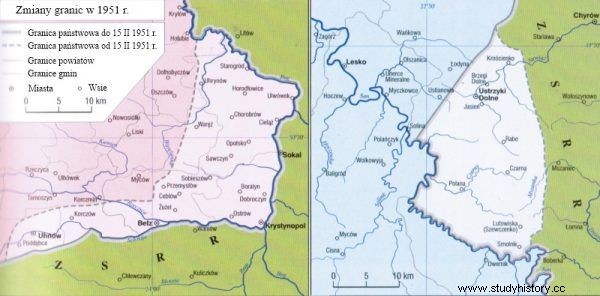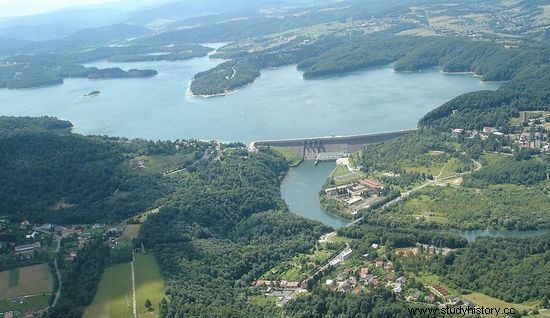The past era was full of many "great" interests between the so-called People's Poland and the Soviet Union. It is hard to find a more emphatic example than the replacement of the border areas made in 1951. It was unbelievable how much we lost by giving back the coal-rich "Bug's knee" in exchange for a piece of the Bieszczady Mountains!
As you know very well, under the provisions of the Big Three, our eastern border was largely based on the Bug line. Along this river, it also ran in the Lublin region. This is where the "knee of the Bug" that interests us is located. It is situated in the triangle of three rivers:Bug, Sołokija and Huczwa and, apparently, does not stand out with anything special. However, appearances - as is often the case - are deceptive. The secret is deep underground, and it is rich deposits of "black gold".
Big Brother gives and takes
When the Big Three was setting the borders of Poland, no one knew about this treasure yet, so Józef Stalin gave us the area of 480 square kilometers with his light hand. The problem arose a few years after the war, when Polish geologists discovered rich hard coal deposits in the "Bug's knee". It was then that the "red car" decided to take back what he so kindly "gave" to us.
Of course, officially, it was the Polish side that applied for a change of borders. As Witold Sienkiewicz writes in his book "Poland since 1944. The latest history", the initiative was motivated by the desire to include the eastern upper San basin into the territory of Poland and to build a flood prevention reservoir, similar to that of 1934.

The coal-rich knee of the Bug in exchange for a piece of the Bieszczady Mountains ... (map from the book:Witold Sienkiewicz, Poland since 1944, Demart 2011).
While the very idea of building the reservoir was perfectly justified, a strange coincidence between the discovery of coal deposits and the fact of making this offer may raise serious doubts. And if someone believes in the purity of the intentions of the people's government, it suffices to ask himself a simple question:why should the "knee of the Bug" become the subject of the exchange? After all, we did not miss a common border with the Soviets.
Let us add that the matter did not end with coal. It was also not without significance that a railway line connecting Kowel and Włodzimierz Wołyński with Rawa Ruska and Lviv ran through the "Bug's knee". This forced the Russians - at least in theory - to pay for transit or to take detours.
Interestingly, the communists, caring about the "good of Poland", kept the whole matter a secret from the society, which knew nothing about the talks. , finally finalized on February 14, 1951 in Moscow.
Pursuant to the contract signed at that time, we handed over four communes:Krystynpol, Bełz, Chorobrow and Uhnów, and fragments of three more:Waręż, Dołhobyczów and Tarnoszyn.
In return, we received a fragment of the pre-war Lesko poviat, covering a part of the lower San basin from Smolnik to Solina with Ustrzyki Dolne and depleted oil deposits.
Poles learned about the border correction only on May 22, 1951, i.e. four days before the Sejm ratified the agreement, which entered into force on June 14 of that year. The land was changed a few months later - on November 26, 1951
Half of Polish coal extraction from before the war!
As soon as the "knee of the Bug" was within the borders of the USSR, the Soviets began to build a number of mines, as a result of which, in a short time, as much as 15 million tons of coal per year were mined there!

As part of the exchange, Poland received a piece of the Bieszczady Mountains, where a dam and an artificial reservoir were built in Solina in the 1960s (photo:Zuluanonymous; license CC ASA 3.0).
For comparison, in 1936, a total of about 30 million tons of hard coal was mined in Poland . It is easy to guess that we lost a real fortune on a slight change in the course of the border. How big?
In 1953, a ton of coal on world markets cost 13 dollars at that time (over 100 today dollars). If Poland wanted to export coal from the Bug River abroad, it could earn 1.5 billion today's dollars in one year.
This is how we lost tens of billions of dollars over several decades! The fate of people who fled or were forcibly displaced from the exchange areas should not be forgotten either.
What did we gain in return? Beautiful views and a dam built in the 1960s and an artificial reservoir in Solina. See for yourself if it was profitable.
